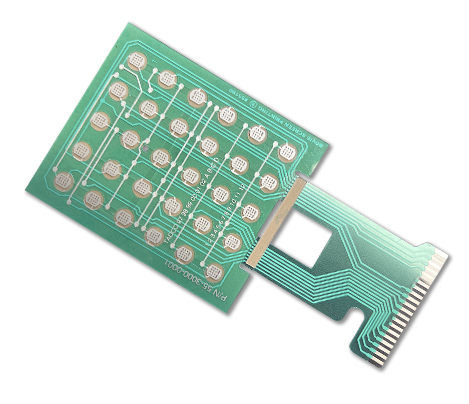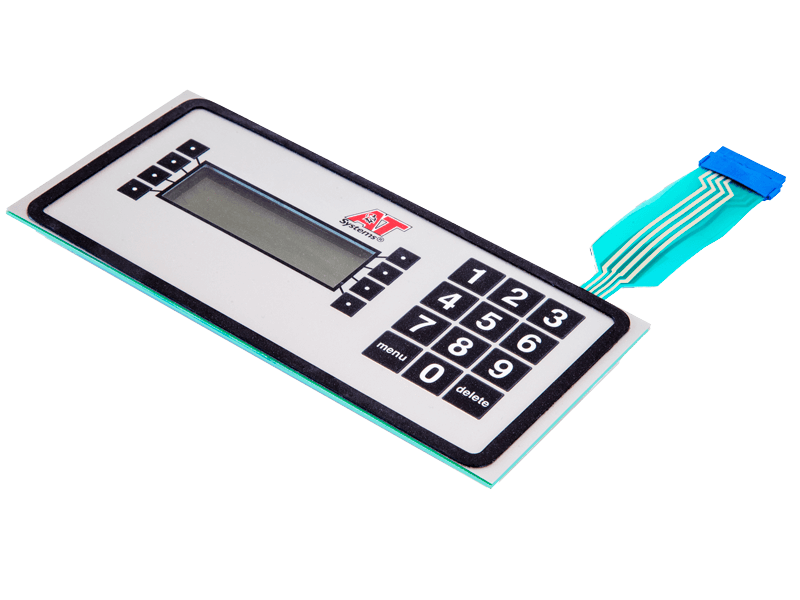Why Membrane Switches Are Preferred for Their Thin and Compact Styles
Why Membrane Switches Are Preferred for Their Thin and Compact Styles
Blog Article
Membrane Switches Over Explained: A Comprehensive Guide to Their Advantages
Membrane changes stand for a innovative and functional solution for developing customer interfaces across a variety of industries. Their multilayered layout not only makes sure capability with easy pressure yet also supplies substantial benefits, such as longevity and personalization. As markets increasingly look for efficient and trustworthy control interfaces, comprehending the particular advantages and applications of membrane layer changes becomes important. However, the ins and outs of their design and execution present unique difficulties that merit more detailed evaluation. What elements should be taken into consideration to totally leverage their potential in modern applications?
What Are Membrane Layer Switches?

When pressure is related to the membrane layer button, the layers make get in touch with, completing an electrical circuit. This basic mechanism permits a variety of applications, from customer electronics to industrial machinery. Membrane layer buttons are commonly designed to be immune and water-proof to dirt and contaminants, making them appropriate for settings where longevity is important.
Furthermore, the versatility of the materials utilized in membrane layer changes facilitates cutting-edge styles that can adapt various shapes and measurements. This adaptability contributes to their appeal in diverse fields, including medical gadgets, automotive controls, and home devices. On the whole, membrane layer switches over represent a critical element in modern interface innovation, bridging the gap in between customers and electronic systems.
Trick Benefits of Membrane Layer Switches
Amongst the myriad of interface options available, membrane changes stand out for their one-of-a-kind combination of advantages. One of the primary advantages is their compact and lightweight style, which permits assimilation into a vast array of tools without including significant mass. This is especially helpful in applications where area is restricted.
In addition, membrane switches deal durability and resistance to environmental aspects. They are typically constructed with products that can endure dampness, dirt, and numerous chemicals, making them suitable for harsh problems. This sturdiness adds to a much longer lifespan contrasted to conventional mechanical buttons.
An additional considerable advantage is the flexibility in modification. Membrane buttons can be published with numerous graphics, colors, and textures, allowing for tailored styles that satisfy particular branding or practical demands. This adaptability reaches the variety of layers and circuit choices, offering designers with several configurations.
Furthermore, the responsive feedback offered by some membrane switches over enhances individual experience, making them extra user-friendly to run. The simplicity of cleansing and maintenance better strengthens membrane buttons as a functional selection in both consumer and industrial applications. Overall, these key benefits make them a preferred solution for several developers and manufacturers
Applications in Different Industries
Just how do membrane buttons discover their location across varied markets? Their adaptability and performance make them integral elements in industries varying from health care to customer electronics. In medical tools, membrane buttons are utilized for their ease of cleaning and resistance to contamination, ensuring hygiene in atmospheres where sterility is vital.
In the customer electronics sector, these switches supply sleek, easy to use interfaces that improve product aesthetics while preserving toughness against wear and tear. Automotive applications take advantage of membrane layer changes too, where they are utilized in control panels and control panels, providing reputable efficiency in difficult conditions.
In addition, commercial equipment uses membrane layer switches for control board due to their effectiveness, capability to stand up to severe settings, and adjustable designs that cater to details operational demands. The food market leverages membrane layer buttons for their convenience of usage and resistance to spills, ensuring functional effectiveness in fast-paced settings.
Ultimately, the adaptability of membrane changes across these varied applications highlights their necessary duty in modern innovation, improving user communication while fulfilling industry-specific requirements. Their proceeded advancement guarantees further integration into emerging fields and innovative products.
Design and Personalization Alternatives
The style and customization options readily available for membrane switches are important for tailoring user interfaces to meet particular individual needs and aesthetic choices. These switches can be designed in numerous forms, dimensions, and formats, permitting smooth integration into diverse applications. The flexibility in design suggests that suppliers can create unique interfaces that improve usability and preserve brand identification.
Customized appearances, colors, and graphics can be applied to the surface of the membrane button, supplying a possibility for branding and customer interaction. In addition, backlighting options, such as LED lighting, can be integrated to enhance exposure in low-light conditions, therefore improving performance.
Useful components can additionally be tailored, consisting of responsive comments and actuation force, which can be adapted to suit different customer communications. The choice of materials, such as polyester or polycarbonate, permits variations in longevity and ecological resistance, providing to the details needs of various markets.
Eventually, the substantial style and modification capacities of membrane layer switches allow companies to develop aesthetically appealing and user-friendly user interfaces, ensuring that their products meet both aesthetic and useful demands why not try this out efficiently. Membrane Switches.
Factors To Consider for Application
Implementing membrane layer switches calls for careful factor to consider of different variables to guarantee optimum performance and customer experience. Among the primary factors to consider is the intended application atmosphere. Factors such as exposure to dampness, severe temperatures, and chemical materials can considerably influence the switch's efficiency and longevity. Choosing materials that hold up against these conditions is important.

Another essential element is the button's design and layout. Making sure that the responsive responses and actuation pressure line up with user expectations enhances usability. Conducting user testing can supply beneficial understandings right into the optimum style.
Furthermore, compatibility with digital elements need to be analyzed. The button's circuitry ought to line up with the general system design, making sure trustworthy signal transmission and decreasing disturbance.
Additionally, production techniques and costs must be reviewed. The option in between personalized layouts and conventional designs can lead and influence both spending plan time.
Finally, think about repair and maintenance. Membrane buttons might require specific cleaning and care procedures to maintain their look and performance in time. By resolving these factors to consider, organizations can apply membrane buttons that meet their functional requirements while providing a favorable user experience.

Final Thought
Finally, membrane layer changes stand for a long lasting and functional control user interface appropriate for a variety of applications across numerous industries. Their portable style, resistance to ecological aspects, and customizable attributes improve user experience while conference specific branding requirements. As technology remains to evolve, the importance of membrane buttons in modern gadgets continues to be considerable, offering both performance and visual appeal. Future advancements will likely even more increase their applications and effectiveness in numerous linked here environments.
Membrane changes stand for a flexible and sophisticated option for developing user interfaces across a selection of sectors.Understanding the essential elements of contemporary electronic interfaces, membrane layer buttons are a kind of user interface tool that are composed of adaptable, slim layers of material. In general, membrane layer changes stand for an essential element in modern user interface modern technology, bridging the gap in between customers and digital systems.
Among the myriad of individual interface alternatives available, membrane layer switches over stand out for their one-of-a-kind mix of advantages.The style and personalization alternatives available for her latest blog membrane layer buttons are critical for customizing user interfaces to satisfy certain individual needs and visual choices.
Report this page